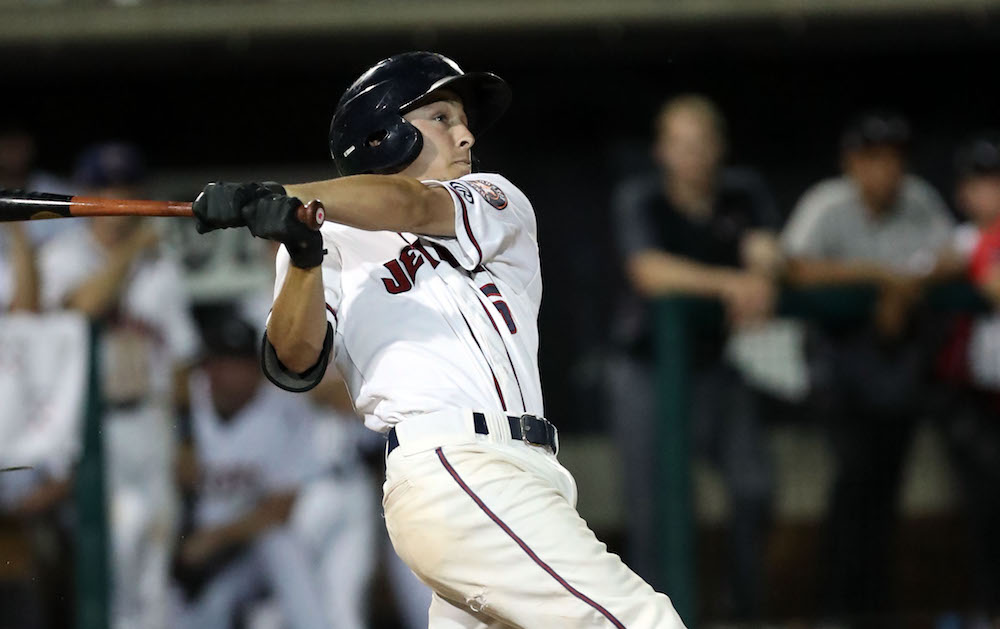Feature Photo: Garrett Stubbs, C, Astros
Dave DeFreitas and Ryan Ozella continue to have their eyes pinned on the California League, with profiles and reports on prospects playing for the High A affiliates of the Dodgers, Padres, Astros, Angels, Giants and Mariners.
Plus, Nick J. Faleris takes a look at four prospects, including the Blue Jays’ Cavan Biggio, who began his pro career on June 20 for Vancouver in the Short-Season A Northwest League, and the Angels’ Matt Thaiss, the 16th-overall selection in this year’s MLB Draft who is off to a hot start for Rookie Orem of the Pioneer League.
Our Report Library has also been updated with twelve new prospect reports.
Double-A Prospect Spotlight
 Ian Happ, 2B, Cubs (Double-A Tennessee, Southern League)
Ian Happ, 2B, Cubs (Double-A Tennessee, Southern League)
Ht/Wt: 6’0” / 205 B/T: S/R Age: 21 yrs, 10m
Happ’s impressive 2016 has been recognized officially by the Cubs, with the former Bearcat receiving a promotion to Double-A Tennessee last week – a week in which Happ slashed .600/.655/1.160 over 29 plate appearances between Tennessee and High A Myrtle Beach. In his final Carolina League series, Happ went 10-for-20 against Potomac, with seven of his hits going for extra bases (five doubles, a triple and a homer).
The switch-hitting Happ has hit well from both sides of the plate this year and projects as an above-average bat with 20 home run potential. He has a balanced and leveraged swing that plays across the diamond, and there is enough raw pop in the barrel to muscle balls out to all fields. Happ controls the strike zone and is at his best working ahead in the count and seeking out fastballs. Historically, he has struggled with spin, particularly on the outer half, and while he has made strides in that department this season, he’ll need to demonstrate that his gains will play against more seasoned arms at the upper levels.
After occupying the outfield in 2015, Happ is back at second base where spent time in college. He’s not yet an asset on the dirt, but he shows enough feel to project as an adequate defender at the major league level. At maturity, Happ will provide Chicago with yet another versatile option to go with a growing army of young multi-position threats already occupying roster space at Wrigley. He should produce as an everyday player, and there is room in the profile to grow into an impactful first-division regular at the upper end of his projections. – Nick J. Faleris
Single A Prospect Spotlights
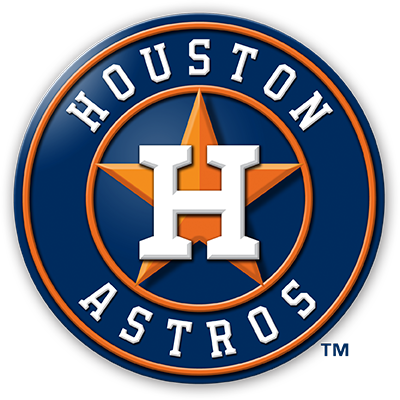 Garrett Stubbs, C, Astros (High A Lancaster, California League)
Garrett Stubbs, C, Astros (High A Lancaster, California League)
Ht/Wt: 5’10” / 175 B/T: L/R Age: 23 yrs, 0m
Coming off of his Pac-12 Defensive Player of the Year award while at USC in 2015, Stubbs went in the eighth round to the Astros in the 2015 MLB Draft, and he’s hit the ground running in his first 12 months in pro ball. Some may feel Stubbs is undersized for the catcher position, but what he lacks in weight, he makes up for in athleticism. He brings a great energy to his club and has demonstrated leadership qualities on the field that will make him a valuable part of the Houston organization going forward.
His carry tool is likely going to be his glove, and provided that he stays healthy, he should find himself on some top prospect lists going into this offseason. He has very loose, easy actions and his arm works well from behind the plate. So far he seems unfazed by the jump to High A this year following his 25 game stint in the Class A Midwest League post-draft last season. His advanced plate discipline has continued with a 28:24 SO:BB ratio through the first half, and he has gunned down 39% of would-be basestealers. He does have six passed balls, which is surprising because he was Jonathan Quick-esque in my looks last week, showing above-average lateral range on balls in the dirt.
He tends to sit back a bit at the plate and has a slightly uphill path – something that will work against him on the offensive side, as he does not project to be a big power guy. He does have good bat-to-ball skills and even though he is already 23 years old, his athletic frame has room for him to fill out and see some strength gains. He should be able to find the gaps and I believe that the on-base skills will continue as he moves up. Couple that with his plus defense behind the plate, and you have yourself a pretty solid contributor at the big league level. He will take a beating behind the plate, so the concerns about him wearing down have merit – however teams are beginning to move away from just one guy handling the bulk of the catching duties, and a platoon model is now more common. Some of that has to do with lack of depth at the position; some of it more to preserve a guy’s plus bat by getting him reps at a less strenuous position.
While Stubbs doesn’t profile as having big time offensive value, he should hit enough to utilize his athleticism at other spots. Much like C Tony Wolters’ profile in Colorado, I see Stubbs being able to handle other infield positions (2B/3B) and really add utility value and depth to a 25-man roster. He was named to the Cal League All-Star team last week, and while he is not elite in any one area, he does do a lot of things well, and I expect him to get the most out of his ability as he advances. See my full report on Stubbs below. – Dave DeFreitas
 Joshua Sborz, RHP, Dodgers (High A Rancho Cucamonga, California League)
Joshua Sborz, RHP, Dodgers (High A Rancho Cucamonga, California League)
Ht/Wt: 6’3” / 225 B/T: R/R Age: 22 yrs, 6m
The Dodgers’ farm system is loaded with high-quality arms, and Sborz is no exception. Sborz split time between the bullpen and starting, showing success in both roles at Virginia, before being drafted as a second-round supplemental pick last year. In his first year of pro ball, Sborz switched between the bullpen and starting, but has worked only as a starter this year and is thriving (72/18 K/BB, .208 BAA, 2.58 ERA, 0.99 WHIP) while making the Cal League All-Star Game.
Sborz has a strong frame, with wide shoulders and long legs, and he could still add some strength to help him go longer in games. He showcased a high 3/4 ‘s release point from a compact delivery, though it’s unique – he starts by taking a deep breath and doing a short “squat” over the rubber before starting his motion. His motion starts with his hands at his chest before dropping to the waist and lifting simultaneously with his front leg. He gets a full circle behind him while using his glove arm to hide the ball and drive towards the plate, getting plus extension down the hill. This delivery and extension helps create deception, and the ball jumps on hitters. With as many moving parts as there are in Sborz’s delivery, he does a good job of repeating the motion and having a consistent release point, allowing him to attack the zone.
Sborz pitches aggressively with all four pitches, looking to get ahead early and inducing weak contact. He has a plus fastball, working 91-to-93 mph (T94) with extra life out of the hand and it played well when up in the zone. Sborz has better command of the pitch to the arm side, and will cut the pitch when going glove side, giving it an added dimension. Another scout mentioned that he had seen the fastball sit 94-to-96 mph (T97) in a previous start, so there could still be more to develop as a starter, or to play up in the bullpen.
His slider sat 85-to-87 mph, and works well off the fastball by having late and tight downward cut. The pitch showed some above-average movement and was utilized off the plate to miss bats. Sborz flashed a plus curveball in the 77-to-80 mph range with the ability to control the big 12-to-6 shape for strikes early in the count, or speeding up into a power curve that disappeared when he was looking for strikeouts. Sborz also had a fringy changeup that flashed better than it performed. The changeup was 80-to-83 mph (T85) but it didn’t get much work, though it flashed some arm-side run when not overthrown. Sborz flashed some average ability with the changeup, but overall he lacked feel, and did not find a consistent release point.
In my viewing, Sborz only pitched five innings. This may be an attempt by the Dodgers to limit his innings as he grows into the starter’s role, or the fact that two of the Dodgers’ starting pitchers were rehabbing, and they needed to get the bullpen work. In either case, Sborz was effective (four Ks, just three base runners) and had a good idea on setting up hitters while changing the pitch sequences to keep them off balance. I like the versatility that Sborz provides, and I can see him being successful either as a #4 starter, or in a top bullpen role. With the quantity of arms in the Dodgers’ farm system, I would let Sborz continue to develop as a starter, knowing that if you needed a bullpen arm he could make the transition quickly. – Ryan Ozella
 Drew Jackson, SS, Mariners (High A Bakersfield, California League)
Drew Jackson, SS, Mariners (High A Bakersfield, California League)
Ht/Wt: 6’2” / 200 B/T: R/R Age: 22 yrs, 11m
Headed into the 2016 season, Jackson was the fourth-ranked M’s prospect after making good on his fifth-round selection in the 2015 Draft. He hails from Stanford and impressed evaluators in his first taste of pro ball last summer, devouring Northwest League pitching to the tune of a .358 batting average, .879 OPS and a 35:30 SO:BB rate. Physically, Jackson looks every bit the part of a top prospect; his long, muscular frame and broad shoulders make his strength and athleticism quite apparent at first glance. He runs well for someone his size, showing fringe-average to average times from HP-to-1B, but it plays much better underway where he can lengthen out his strides. He has not shown much power, which is a little surprising given his size, but he does have decent bat-to-ball skills and has a feel for the strike zone (45:30 SO:BB rate again in the first half of 2016).
But he showed below-average bat speed in my looks, and while he can get into balls to the pull side, he tends to get a little long and lacks ability to drive the ball hard to the middle of the field. I’m not sure what his exit velocity is on FB’s so far in 2016, but my guess would be that it is below average, indicating that he will be over matched as he starts to see more consistent velocity.
Then comes the defense. As of now, Jackson is staying at shortstop, where he has enough arm (55 grade) and average to slightly above-average range (55 grade) despite not being a plus runner. Both of these things bode well for an athletic guy to stay at the position and continue to produce. However, this is also where things start to get a little murky for me. While he does possess those tools mentioned above, his hands are below average; he tends to get back on his heels and has a very “passive” approach to ground balls which leads to him bending at the waist and seeing his hands firm up instead of staying in motion and generating momentum through the ball on towards first base. He is athletic enough to compensate for this most of the time, however it’s not something that is going to be sustainable as he moves up; with 15 errors already in 2016, some might say that the poor technique has already caught up with him.
That said, on balls where he doesn’t have time to think and just reacts, he tends to be far more athletic and aggressive – so it is in there, but the question is can he repeat it more often. Approach on defense is something that can be corrected and improved upon, so there is hope that Jackson will stick at shortstop, where is his below-average to fringe-average hit tool will play better. However, given how he runs and the long strides that help him really cover ground underway, I can’t help but think if the outfield might be a better place for him – ultimately allowing him to better utilize his athleticism. He likely is not going to hit for the power needed to hold down a corner-outfield spot, but I could see his deceptive speed being enough to contribute in center field.
To be fair to the Stanford alum, I only have a three-game look so far, and there are a number of scouts and executives that have seen him play a lot better. I am far from writing him off, but at this point he is more the Role 40 ceiling-type player for me rather than the solid big league regular that I was expecting going in. I plan to catch more of him in the second half before turning in my full report. – Dave DeFreitas
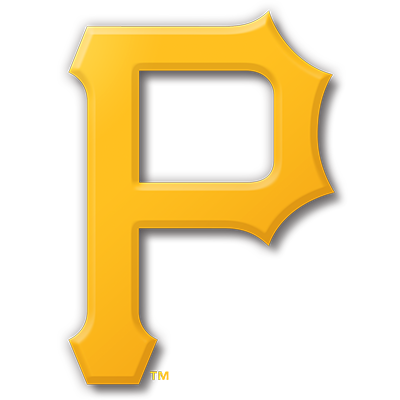 Mitch Keller, RHP, Pirates (Class A West Virginia, South Atlantic League)
Mitch Keller, RHP, Pirates (Class A West Virginia, South Atlantic League)
Ht/Wt: 6’3” / 195 B/T: R/R Age: 20 yrs, 2m
After missing most of 2015 with a forearm strain, the Pirates’ 2014 second-round pick has been a revelation this spring in his first taste of full-season ball, logging 67 innings over 12 starts thus far, and punching out 76 batters while walking just seven. Additionally, Keller has held opposing bats to a paltry .196 BAA, and allowed just three home runs over 252 plate appearances. His first-half performance earned him the starting nod in the Sally League All-Star Game last week, where the impressive righty breezed through his inning of work.
Keller needed just 11 pitches – all fastballs and curveballs – to retire the South Division All-Star’s 1-2-3 batters. The heater sat comfortably in the low 90s with good downward plane on the pitch and resided mostly at the knees. The curveball has evolved from the nascent 12-to-6 breaker he threw in high school to a hard-biting 11-to-5 hammer that plays as both a freeze offering and a bury pitch when ahead in the count. Both of his strikeouts in the All-Star Game were recorded on breaking balls – the first coming on a plus bender in the zone swung through by the Braves’ Ray-Patrick Didder, and the second a knee-buckler, following an elevated fastball, that sent the Rockies’ Brian Mundell (then league leader in batting average) back to the bench with a backwards-K. The two strikeouts bookended a soft chopper off the bat of the Mets’ Vinny Siena.
Keller turned just 20 years old in April, and while his 2016 results have been spectacular thus far, the Pirates have the luxury of allowing him further time in the Sally League to improve his off-speed stuff as well as the consistency of his finish across his entire arsenal. It’s a low-maintenance delivery with solid pacing, but he can slip into a non-uniform stride from time-to-time and when he gets too short out in front he has a tendency to yank his pitches to the glove side. The upside is that of a solid mid-rotation arm and, provided he finishes out the season in even remotely the style he’s started, Keller should be firmly entrenched on the national prospecting scene moving forward. – Nick J. Faleris
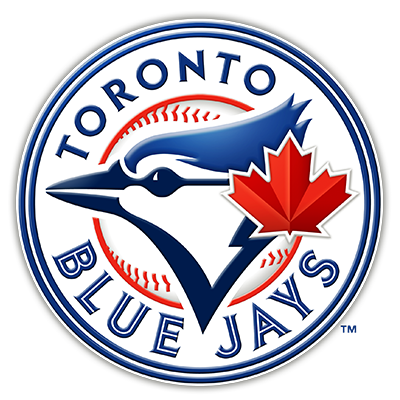 Cavan Biggio, OF, Blue Jays (Short Season A Vancouver, Northwest League)
Cavan Biggio, OF, Blue Jays (Short Season A Vancouver, Northwest League)
Ht/Wt: 6’1” / 203 B/T: L/R Age: 21 yrs, 2m
The son of Hall of Famer Craig Biggio, Cavan stepped onto Notre Dame’s campus in 2013 as one of the better-known freshmen in all of college baseball, already pegged by scouts as having a modest tool set, with impressive feel for the game and an advanced level of comfort in the batter’s box. Three years and 167 college games later – a starter in all but one of those contests – the former Houston prep product was popped by Toronto in the fifth round of this year’s MLB First-Year Player Draft, signed for $300,000, and promptly assigned the talent-rich Short-Season A Northwest League, where he has shown well over his first week of play.
Biggio remains much the same player he was in high school, demonstrating a high level of comfort and confidence in his actions, but lacking impact in his profile. His hit tool is his loudest, projecting to average at present, with some room to tease up to an above-average weapon with modifications in his swing mechanics. His cuts come with pre-load noise, and some inconsistency from his load through his launch, leading to an inconsistent path to the ball and sporadic hard contact. He controls the strike zone well, and does a solid job picking out pitches to attack, but he may need to quiet his actions some to achieve more efficiency and limit his exposure to both velocity and more advanced spin.
Though listed as an outfielder, the Blue Jays have started Biggio at second base in five of his first six pro games (he was the DH in the sixth), which is consistent with his usage at Notre Dame. He lacks fluidity in his actions on the dirt and could eventually need to shift to the outfield, where his below-average arm would limit him to left field. It’s likely his defense will be a developmental focus for the Jays, as the key to his long-term viability as a pro contributor may very well be tied to his ability to produce adequately at the keystone, where his average hit tool could play.
Biggio is unlikely to be a star, but there’s little question as to his ability to put in the work and get the most out of his abilities. With reps, instruction and a little luck, he could grow into an everyday contributor at the four-spot with a solid on-base profile. – Nick J. Faleris
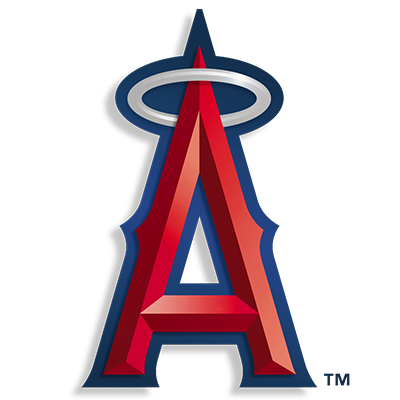 Matt Thaiss, 1B, Angels (Rookie Orem, Pioneer League)
Matt Thaiss, 1B, Angels (Rookie Orem, Pioneer League)
Ht/Wt: 6’0” / 195 B/T: L/R Age: 21 yrs, 1m
Thaiss was one of the top collegiate bats in this year’s draft class, showing above-average raw power, a nuanced approach at the plate, and feel for the barrel that allowed the UVA backstop to earn his reputation as one of the more difficult strikeouts in the collegiate game. In addition to displaying good strike zone discipline, Thaiss is comfortable fouling off tough offerings while working for a pitch he can drive, and he shows an ability to utilize the whole field.
After being selected 16th overall by the Angels in this year’s MLB Draft, Thaiss reported to Rookie Orem in the Pioneer League, where he’s logged 18 plate appearances over his first four pro games, slashing .375/.444/1.319 with two doubles and two homers to go with two singles. He shouldn’t be long for Orem, given the advanced nature of his offensive skill set, not to mention the news that Baseball America’s Kyle Glaser broke on Twitter this week – the Angels plan to develop Thaiss as a first baseman “at this time.” It would appear the Angels are looking to put Thaiss’s stick on the fast track, in which case the Virginia standout should quickly work his way through the lower levels.
While Thaiss certainly had his share of skeptics as to the likelihood he’d stick as a catcher long term, his defenders were vocal and insistent that the foundation was there for Thaiss to develop into a solid, and even productive, major league backstop. His catch-and-throw game plays at present, and the vast majority of the development required on the defensive end centers on rep-based skills, including blocking and receiving. It should be noted that the Angels could very well be allowing Thaiss the opportunity to focus on acclimating his bat to the pro game for the time being (while allowing him some rest after a long collegiate season behind the dish), and he could easily slip back behind the plate during fall instructs, where the Angels could take a deeper look at the developmental punch list facing the two-time All-American.
Either way, the Angels landed themselves a quality bat capable of hitting for average and power, and while the offensive bar increases greatly from catcher to first base, Thaiss has the stick to make it work at either position. – Nick J. Faleris
This Week at 2080 Baseball…
Reports Filed:
Bryan Muniz, 1B, Astros (High A Lancaster, California League)
Bobby Boyd, LF, Astros (High A Lancaster, California League)
Garrett Stubbs, C, Astros (High A Lancaster, California League)
Devan Ahart, RF, Dodgers (High A Rancho Cucamonga, California League)
Sam Coonrod, RHP, Giants (High A San Jose, California League)
Matt Beaty, 3B, Dodgers (High A Rancho Cucamonga, California League)
Tyler Herb, RHP, Mariners (High A Bakersfield, California League)
Trent Thornton, RHP, Astros, (High A Lancaster, California League)
Kevin Comer, RHP, Astros (High A Lancaster, California League)
Brad Wieck, LHP, Padres (High A Lake Elsinore, California League)
Yasiel Sierra, RHP, Dodgers (High A Rancho Cucamonga, California League)
Taylor Ward, C, Angels (High A Inland Empire, California League)
Kyle Petty, 1B, Mariners (High A Bakersfield, California League)
2080 Content:
- Lisa Winston profiles five players, including top prospect Willson Contreras (C, Cubs) debuting in the major leagues last week in her ongoing Les Debutantes column.
- Emily Waldon profiles Tigers RHP Joe Jimenez (Double-A Erie, Eastern League) and his rapid ascension through the Tigers’ farm system, which might end with a trip to Detroit by the end of the year.

